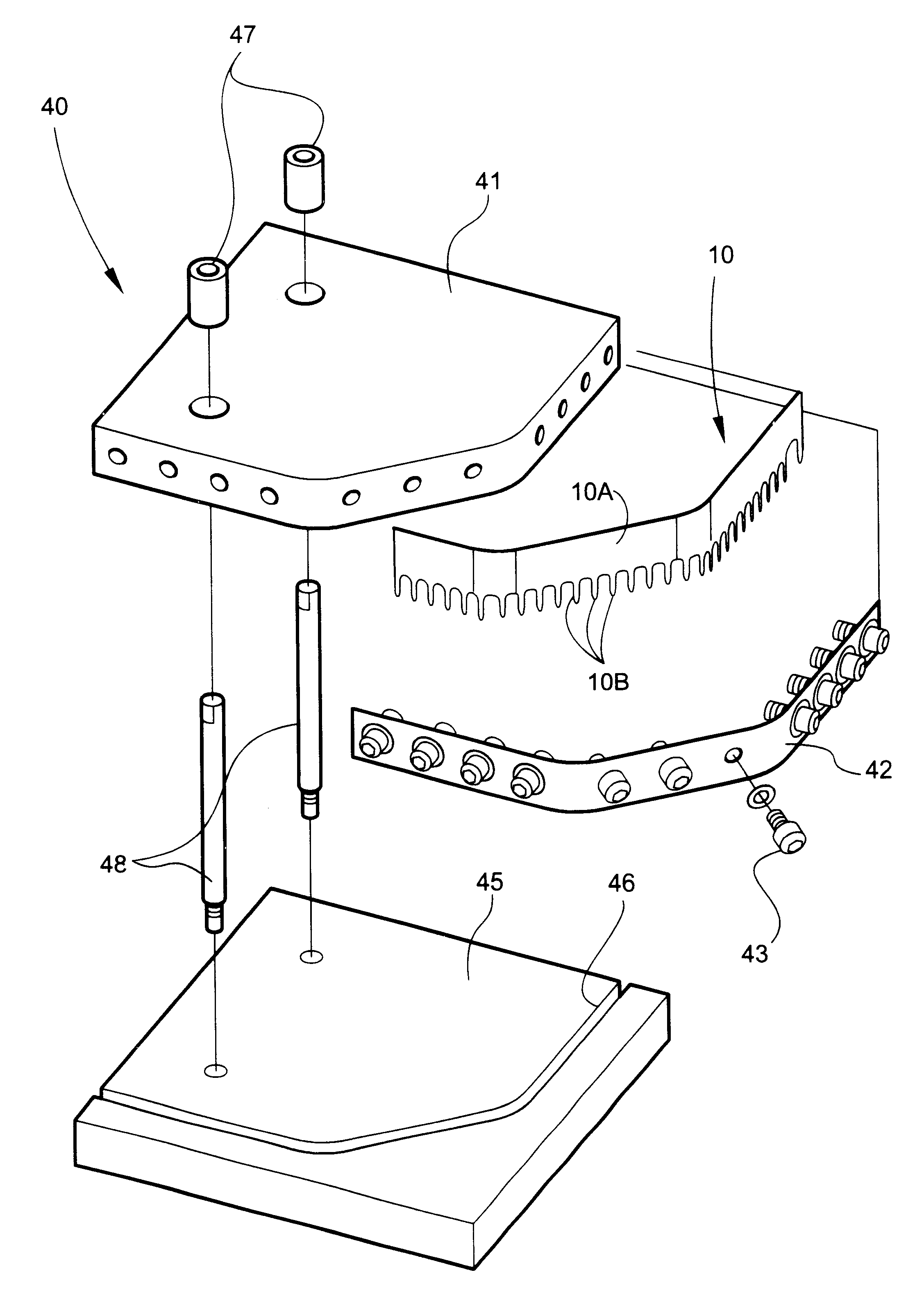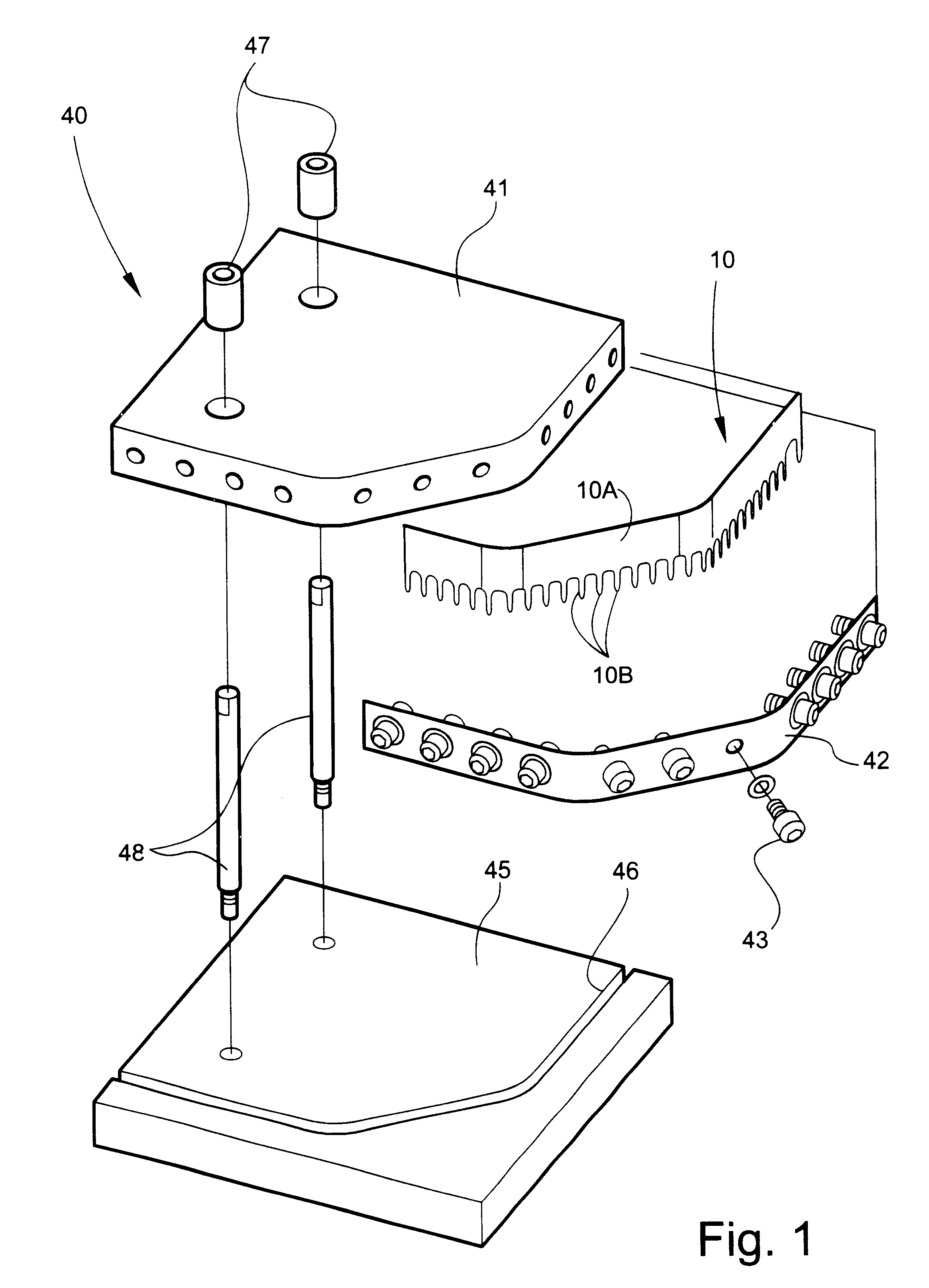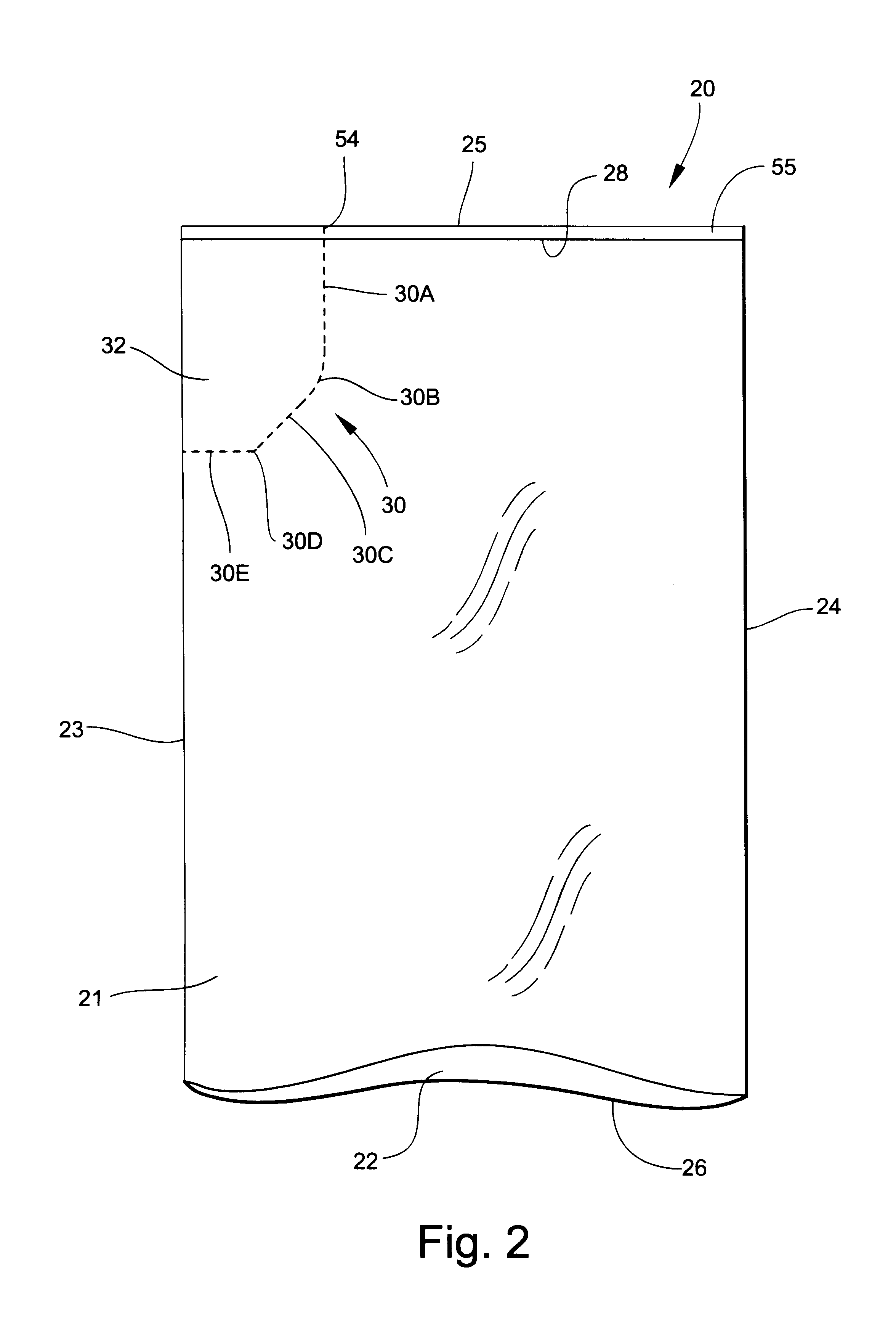Perforation blade for forming a burst-resistant easy-open corner in a heavy duty bag
a perforation blade and heavy-duty technology, applied in the field of heavy-duty plastic bags, can solve the problems of inability to manually open the bag by hand, substantial physical effort, inadvertent uncontrolled dumping or over-dumping of contents, etc., and achieve the effect of improving the perforation blad
- Summary
- Abstract
- Description
- Claims
- Application Information
AI Technical Summary
Benefits of technology
Problems solved by technology
Method used
Image
Examples
Embodiment Construction
Referring now specifically to the drawings, a perforation blade used to form a bag with an easy-open corner is illustrated in FIG. 1 and shown generally at reference numeral 10. Such bags are typically fabricated from polyolefin sheet or tube stock, and are commonly used for heavy-duty applications such as for transport, sale, and storage of materials such as chemicals, salt, fertilizer, lawn lime, potting soil, and the like. The bag 20, shown in FIG. 2, has first and second walls 21 and 22 with joined opposing side edges 23 and 24, opposing end edges 25 and 26, and a seal line 28 proximate the end edge 25 for sealing closed an end of the bag 20. The opposite end of the bag 20 remains open for filling. The term "joined" is used in a broad sense to mean either two formerly separate sheets connected together, or integrally formed by, for example, folding over a sheet to define an edge. The perforation blade 10 forms a line of closely-spaced perforations 30 in each of the bag walls 21 ...
PUM
| Property | Measurement | Unit |
|---|---|---|
| thickness | aaaaa | aaaaa |
| width | aaaaa | aaaaa |
| width | aaaaa | aaaaa |
Abstract
Description
Claims
Application Information
 Login to View More
Login to View More - R&D
- Intellectual Property
- Life Sciences
- Materials
- Tech Scout
- Unparalleled Data Quality
- Higher Quality Content
- 60% Fewer Hallucinations
Browse by: Latest US Patents, China's latest patents, Technical Efficacy Thesaurus, Application Domain, Technology Topic, Popular Technical Reports.
© 2025 PatSnap. All rights reserved.Legal|Privacy policy|Modern Slavery Act Transparency Statement|Sitemap|About US| Contact US: help@patsnap.com



